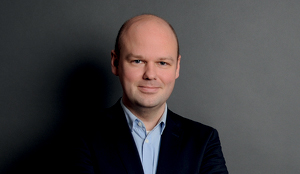UPC Blog Series: Part 5: The UPC and UP: Lessons learned so far
The Unified Patent Court (UPC) opened on 1 June 2023 and so has been in operation now for nearly 4 weeks. The fifth part of our UPC blog series is a look back on the state of play before the UPC opened, our initial experience with the new court and some helpful insight into what to expect.
The opt-out
During the so-called “sunrise period”, about 465.000 patents and patent applications were opted-out from the jurisdiction of the UPC.
Following-up on the previous analysis presented by our colleague Juliet Hibbert on 24 May 2023 (What is the opt-out take up now?), it turned out that a significant number of opt-outs were only registered in the final days of the sunrise period: About 47 % of all opt-outs during the sunrise period were done between 22 May and 31 May 2023.
Now, the number of opt-outs has increased to about 528,000 patents and patent applications (26 June 2023). It is no surprise that after the end of the sunrise period, the increase has slowed down. It is to be expected that from now on, the number of opted-out patents will increase rather linearly, since a certain proportion of newly granted patents and/or newly published patent applications will be opted-out in the future.
There has been a debate on the meaning of these numbers for the success of the UPC. In this context, it has for example been estimated that by the start of the UPC at least 50 %, maybe even 65 %, of all EP patents have been opted out, possibly indicating that patentees and applicants may still be rather reluctant with respect to the UPC.
However, this estimate should be treated with caution, as it is based on several assumptions (only patents in force in Germany were considered; it was assumed that 80% of the patents in force in Germany are Eps; it was further assumed that pending applications are opted-out with the same ratio as patents; expired patents were disregarded).
It is important to note that the proportion of opted-out Eps can per se not be taken as a measure for the acceptance of the new UPC system by patentees and applicants.
Firstly, only a small percentage of patents is actually litigated in practice. Therefore, even if a significant part of the granted patents is opted-out, the question is, rather whether the small proportion of patents relevant in terms of litigation have been opted-out or not. Although patentees rather might have opted-out patents which cover very important technology and/or are highly relevant for possible infringement actions, in order to avoid the risk of a UPC-wide revocation (see The-opt-out-guide), exact numbers in this regard are not available. In other words, it is not known to which extent patents relevant for possible litigations have actually been opted out.
Secondly, it needs to be kept in mind that the opt-out can be withdrawn. Consequently, there is the option of opting-out a patent first and withdrawing the opt-out only if an infringement action before the UPC is intended.
Some patentees may rather apply a “wait and see strategy” before using the UPC system themselves (for further comments on this strategy see: UPC Blog Series Part 2 – Bird & Bird. This means that it cannot be concluded that a presently opted-out patent will not be litigated before the UPC at a later stage.
In short, it is suggested not to read too much into the number of opt-outs right now.
Initial cases filed
After the start of the UPC, it is interesting to look at the actions which have been filed so far.
According to the presently available data, it seems that 13 infringement actions were filed in week 1 before the following UPC divisions:
- Munich local division: 6 cases (4 electronics, 1 medical devices, 1 pharma)
- Nordic/Baltic regional division: 2 cases (1 medical devices, 1 mechanics)
- Düsseldorf local division: 2 cases (2 mechanics)
- Hamburg local division: 2 cases (1 pharma, 1 mechanics)
- Milan local division: 1 case (mechanics)
In addition, 3 revocation actions were filed in week 1: All of them relate to the technical field of biotechnology (pharma). Two of them were initially assigned to the Paris central division, while the third case was assigned to the Munich central division. In the meantime, it appears from the UPC register that now all three cases are assigned to the Munich central division.
Finally, 2 applications for provisional measures were filed with the Munich local division. No further information is currently publicly available in this regard.
It is noted that some of the above cases are interrelated. For example, three of the infringement cases are between the same parties, one before the Düsseldorf local division, one before the Nordic/Baltic regional division and one before the Milan local division.
Also two further infringement cases are between identical parties (one before the Munich local division and one before the Nordic/Baltic regional division).
Finally, one of the revocation actions is directed against a patent which is asserted in an infringement action pending before the Munich local division. The two other revocation actions refer to closely-related patents.
We have to wait and see as to whether additional actions will be filed in the near future, once some practical issues with the CMS have been resolved (see below), further experience with this new system is available, and more unitary patents have been granted.
Finally, it is noted that JUVE reported at the end of last week slightly different numbers (possibly because the data given in the CMS are incomplete or not yet fully up to date). According to this publication, 14 infringement actions, 3 revocation actions, 2 preliminary injunction applications and 2 applications for preventive measures were filed so far. 19 of these 21 cases were apparently filed in week 1, while the remaining 2 cases were filed in week 2.
Practical issues with the UPC Case Management System
On day 1, several actions were ready to be filed (see above). However, it took quite a while until the first actions were actually on file. According to the UPC register, the first action was lodged on 1 June 2023 at 13:33 CEST – although the UPC and its Case Management System (CMS) opened its doors already at 9:00 CEST.
However, some practical issues arose at the start of the UPC.
First of all, the CMS had limited availability in the morning. This problem was resolved by the UPC in the course of the morning, so that the first actions could be filed in the afternoon.
Then, even though it was possible to opt out European patents during the sunrise period, it was not possible to already file protective letters before the start of the UPC. It is therefore reasonable to assume that a high number of concerned parties wanted to file such a protective letter as soon as the system became operational and that could have further slowed down the CMS in the first few days.
Users of the CMS are also confronted with some unexpected data input challenges these early days. For example, it is not possible to input multiple defendants in the forms for filing a protective letter. Same for multiple plaintiffs in an infringement action or PI request. We have been told that the UPC is currently working on a solution for this. Also, it is not possible to indicate an internal reference number for a protective letter in the CMS forms while this is possible when filing an infringement action.
It is also worth noting that it is currently mandatory to indicate an email-address of the opposing party in the CMS forms when filing an action (and even when filing a protective letter). The CMS will otherwise not let you continue with the filing. Therefore, parties should be prepared to do so and also mention the same email-address in the uploaded action/protective letter.
In general, information such as names, email addresses etc. provided in the CMS forms should be consistent with respective information in the uploaded action/protective letter in order to facilitate formality checks. Any inconstancies between the uploaded submission and the data of the CMS forms may cause trouble. Additionally, once lodged, it is no longer possible to adapt or amend the information neither in the CMS forms nor the uploaded submission.
For a swift processing of an action, it may also be advisable to include in the Statement of claim a section, e.g. a table, comprising all the relevant data for the formality checks (e.g. of Rule 16.2). This way, the clerks of the Court can easily examine that all formalities have been fulfilled.
Another practical issue is currently that the CMS does not allow users to indicate multiple representatives or that multiple representatives of the same firm have access to the same CMS file via their respective personal accounts.
From a practical point of view, this means that only one individual has access to the CMS file while in practice it would be helpful for the whole litigation team to get access. We hope that the CMS will, in the future, provide a more practicable solution for CMS users.

